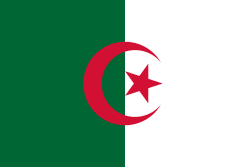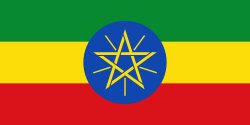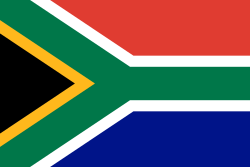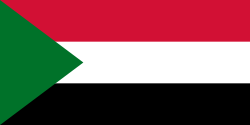Top 10 Most Populated Countries In Africa 2024

In 2020, the United Nations estimates that Africa will have a population of 1.2 billion people. This compares with just around 300 million in 1950. In terms of population growth, Africa is currently one of the fastest-growing regions in the world.
The continent is experiencing its highest growth rate in modern history. This is largely due to declining infant mortality rates in recent decades, thanks to improved medical care and public health initiatives, as well as increased access to contraceptives.
As such, 60 million babies were born in Africa in 2016 alone. This figure is particularly significant when compared to global birth rates across the rest of the world, which stood at 233 million over the same period.
The pace of population growth has been gradually slowing for decades, even though the world's population is projected to keep growing. For the first time since 1950, the pace of population growth on the planet dipped below 1% in 2020. The population growth rate maintains a downward trend that started in the 1970s when it was calculated in five-year intervals.
More than half of the world's predicted population expansion between now and 2050 will come from just eight nations, five of which are African: the Democratic Republic of the Congo, Egypt, Ethiopia, India, Nigeria, Suda, South Africa, and Tanzania.
READ ALSO » Top 10 Lowest Populated Countries In The World
Africa currently stands as the fastest-growing economy in the world, boasting the youngest population of any region. As a result, the population growth prediction stated above juxtaposes numerous economic benefits with problems associated with poor management of population growth.
Most Populated Countries in Africa 2024
- Nigeria
- Algeria
- Ethiopia
- Democratic Republic of the Congo
- South Africa
- Egypt
- Kenya
- Sudan
- Uganda
- Tanzania
1. Nigeria

Nigeria stands as one of the most populous countries in the world with a population of 224,275,240.
Nigeria is rich in cultural diversity and natural resources, and plays a significant role on the global stage. However, Nigeria also grapples with challenges such as infrastructural development, healthcare accessibility, and education. Nigeria's demographic strength and potential for growth position it as a key player in Africa's socio-economic landscape.
2. Algeria

With a population of 45,667,552, Algeria is a North African nation of notable size and influence. Its rich history, spanning ancient civilizations to modern independence struggles, has shaped its unique cultural tapestry. Algeria's economy, largely dependent on oil and gas exports, holds a significant place in the global energy market. The nation's diverse landscapes, from the Sahara desert to the Mediterranean coastline, offer a wealth of natural beauty.
However, challenges related to economic diversification and political stability persist. Algeria's demographic strength and regional importance make it a pivotal player in North Africa's geopolitical landscape.
3. Ethiopia

Ethiopia stands as one of the most populous countries in Africa with a population of 126,809,429. Ethiopia's diverse landscapes range from highlands to lowlands, housing unique flora and fauna.
The country's economy is primarily agrarian, with agriculture employing a substantial portion of the population. While Ethiopia has made strides in economic development, challenges such as poverty and infrastructure gaps persist. With its significant demographic strength and cultural significance
4. Democratic Republic of the Congo

READ ALSO » Top 10 Most Corrupt Countries In Africa 2024
The Democratic Republic of Congo (DRC) is one of Africa's most populous nations. Situated in Central Africa, it is known for its vast expanse of natural resources, including minerals and lush rainforests with a population of about 102,556,950.
The country faces challenges like political instability, poverty, and inadequate infrastructure. The DRC's significant population and resource wealth give it an important role in the socio-economic dynamics of Central Africa.
5. South Africa

South Africa is a diverse nation located at the southern tip of the African continent. Known for its stunning landscapes, ranging from the iconic Table Mountain to vast savannahs, the country offers a rich different natural beauty. South Africa's economy is the most industrialized in Africa, with key sectors including mining, manufacturing, and services.
The nation's history is marked by the struggle against apartheid, a system of institutionalized racial segregation, which eventually led to its dismantling in the early 1990s. Today, South Africa remains a global player, both economically and as a cultural hub on the African continent with a population of 60,462,959.
6. Egypt

Egypt with a population of 112,870,951 stands situated at the crossroads of Africa and Asia, it boasts a rich historical legacy dating back millennia, including the iconic pyramids and ancient Pharaonic civilization. Egypt's economy is diverse, with key sectors encompassing agriculture, manufacturing, and tourism, particularly around the Nile River and the Red Sea coast.
Challenges such as population growth and infrastructure development persist, but Egypt's cultural significance, geopolitical importance, and economic potential continue to shape the broader region.
7. Kenya

Kenya is a vibrant East African nation known for its diverse landscapes and rich cultural heritage has a population of 55,197,515. From the savannahs of the Maasai Mara to the shores of Lake Victoria, Kenya's natural beauty is a testament to its ecological diversity. The country's economy is multifaceted, with agriculture, tourism, and a growing technology sector playing keyl roles.
Kenya has made significant strides in education and healthcare, but challenges like poverty and political stability persist. As a key player in the East African community and a regional economic hub,
8. Sudan

READ ALSO » Top 10 Smallest Countries In Africa By Area 2024
Sudan has a population of 48,219,383, Sudan is a significant nation in northeastern Africa. Challenges such as political instability and socio-economic disparities persist. Sudan's strategic location and demographic strength give it a prominent role in the geopolitics of the region, while its cultural heritage adds to its historical significance.
9. Uganda

Uganda is a landlocked country in East Africa known for its diverse landscapes, including lush forests, expansive lakes, and the source of the Nile River with a population of 48,700,835, The nation's history is rich and complex, with ancient kingdoms and a more recent struggle for independence. Uganda's economy is primarily agrarian, with agriculture employing a significant portion of the population.
Challenges like poverty and healthcare accessibility persist, but Uganda has shown resilience and progress in various sectors. As a member of the East African Community, Uganda plays a crucial role in the regional dynamics of East Africa.
10. Tanzania

Tanzania is a populous East African nation known for its diverse landscapes, including the Serengeti plains, Mount Kilimanjaro, and the tropical shores of Zanzibar with a population of 67,612,351. The country's history is marked by ancient trade routes and a legacy of independence struggles. Tanzania's economy is majorly based on agriculture, with sectors like mining and tourism also contributing greatly.
Challenges like poverty and access to healthcare persist, but Tanzania has made strides in education and conservation efforts. As one of the largest countries in East Africa, Tanzania plays an important role in the economic and cultural dynamics of the region.
